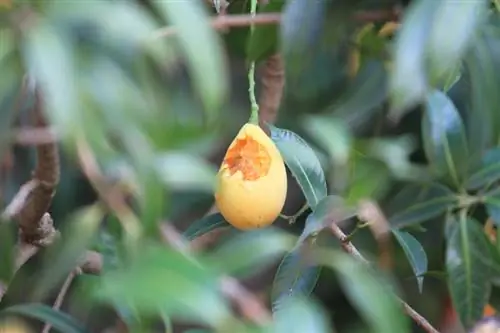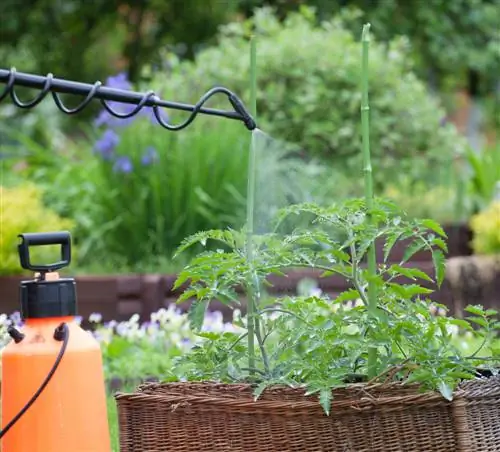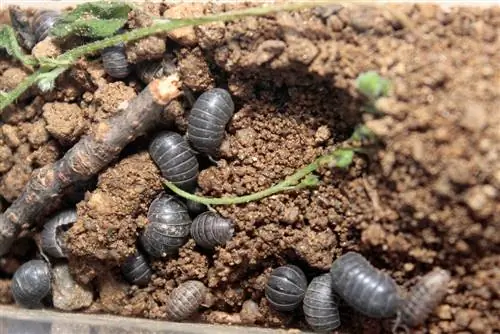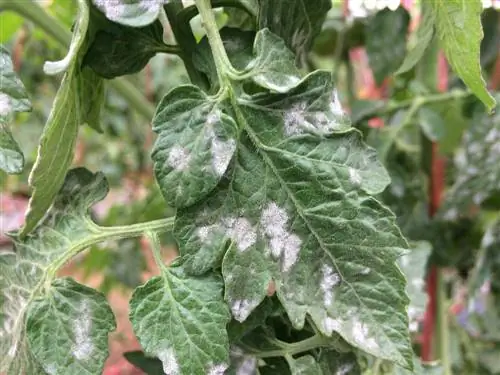- Author admin [email protected].
- Public 2023-12-16 16:46.
- Last modified 2025-01-23 11:22.
Arugula is a salad plant that is a member of the cruciferous family. As such, it is a host plant for typical pests of Brassicaceae. But only two species can really pose a threat to the plant.

What pests attack arugula and how can you combat them?
The most common pests for rocket are the rapeseed flea beetle and cabbage white butterflies. Measures such as cultural protection nets, substrate moisture, regular hoeing, weeding, manure or the use of beneficial insects such as Trichogramma parasitic wasps and brackish wasps can be used for prevention and control.
Flea beetles
Rucola is a popular meal for the rapeseed flea beetle (Psylliodes chrysocephalus), because the lettuce plant has soft and delicate leaf tissue. The affected leaves no longer look appetizing due to the feeding activities of the blue-black to dark green beetles. If young seedlings are infected, they cannot withstand the pest pressure and die.
Damage
The females lay their eggs on the substrate at the base of the plants in spring. Over the next ten days, white larvae develop, burrow into the ground and feed on the thread roots for three weeks. The rocket usually survives this feeding activity without any problems.
Pupation takes place in a soil cocoon. Adult beetles emerge from June to August and feed on the leaf mass of young plants. A typical damage caused by flea beetles is window eating. As the insects scrape the leaf surface, leaf skins are left behind. They dry out, take on a pale brown color and crack. The windows are no larger than four millimeters.
Prevent infestation
Start sowing the rocket early so that the plants are strong enough when the beetles are at their peak. Cultural protection nets prevent pests from reaching the base of the plant to lay their eggs. Mixed cultures with spinach and onion plants reduce pest pressure.
This is what you can do:
- Keep substrate moist as pest insects prefer dry conditions
- Reveal dolls through regular hacking
- Weeding to remove food sources
- Titansy and wormwood manure serve as a repellent
- Rock dust and algae lime prevent egg laying
Cabbage white butterflies
These butterflies are a prime example of natural adaptations to plant defense strategies. Like many cruciferous vegetables, arugula produces secondary plant substances, which are converted into mustard oils when the plant tissue is damaged by caterpillars. They cause the pungent taste and are toxic to insects. Cabbage white butterflies live in long coevolution with brassicas and have developed an intestinal protein that reduces the toxicity of mustard oils. Your larvae can safely feed on rocket leaves until they pupate.
Typical species
The small cabbage white butterfly leaves individual eggs on the undersides of the leaves, which are pale yellow in color and ribbed lengthways. The predators, which are initially pale yellow and later light green, have a light yellow dorsal line and points of the same color on the segments. Green-colored larvae with yellow stripes and black dots hatch from the bright yellow egg packages of the greater cabbage white butterfly.
Effective control methods
Trichogramma parasitic wasps parasitize the butterflies' eggs, preventing further development. The species Cotesia glomerata and Cotesia rubecula are brackish wasps that inject their eggs into butterfly caterpillars. These die after the beneficial organisms have fully developed and left the body.






